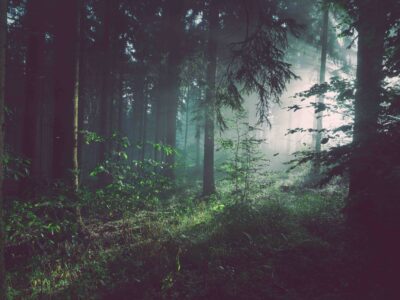David Rubin, the owner and founder of DAVID RUBIN Land Collective, speaks with an easygoing conversational style. He exudes the confidence of the well-informed and the patience of a favorite teacher, making the person he’s talking with feel like they are just sitting down with an old friend, shooting the bull.
But make no mistake, the purpose behind this chat and the meaning that Rubin carries with him, seemingly in every step of his life, is as serious as can be.
He believes in the future.
Founded in 2012, “DAVID RUBIN Land Collective is a landscape architecture, urban design, and planning studio committed to practicing with an emphasis on socially purposeful design strategies,” the organization’s website says. “The studio is dedicated to crafting landscapes that create positive change through cross-disciplinary collaborations and the synthesis of art, technology, and the social sciences to create human-centered works. It is an appreciation for empathy that drives the studio’s design process.”
Photo Courtesy Alan Karchmer
Rubin says that to laypeople, his company designs beautiful, functional public spaces and buildings from a holistic point of view. He says his work has an eye toward making communal spaces sustainable for the earth and welcoming for positive public dialogue.
As a self-proclaimed secular humanist, Rubin approaches his work from a deep-rooted philosophy that we are more alike than different.
“We try to create environments in this humanist vein that are accessible, meaning that not [only] about overcoming physical challenges necessarily, although there’s that, but actually accessibility is about the invitation to participate,” he says to Garden & Health. “And when you can create landscapes where people can self-identify and have conversations, we are more likely to help people lift culture in the most positive ways.”
Rubin points out a recent design of a hospital in Indianapolis, IN, as an example, making the distinction between the typically drab, somber exterior and interior of modern hospitals and the work of “light, art, and nature” he and his team created for the people of Marion County.
Photo Courtesy Alan Karchmer
Pivoting from there to a recent project, Grand Junction Plaza Park, just outside the city in Westfield, IN, Rubin uses this transformative renovation style to turn a fruitless, often flooded riverbed and the surrounding vacant, overgrown common area into a vibrant urban park. It includes an amphitheater, a newly designed riverwalk, and obviously well-thought-out sister architectural designs that are welcoming and visually stunning for the citizens of Westfield to enjoy well into the future.
Taking Garden & Health through his blueprints and showing where the area recently experienced a 500-year flood event, Rubin explains how the purpose is to rebuild nature.
“We can’t recreate nature,” he says, “once you destroy, nature is destroyed. But you can try to reinforce it to work within its processes to help it be a better version of itself.”
Photo Courtesy DAVID RUBIN Land Collective
Pointing out the confluence of three local waterways, hence the name Grand Junction, Rubin describes the plan to “stabilize the creek that would then allow us to create points of social overlay,” like an ice skating rink and a children’s performance venue on site.
In Rubin’s philosophy, part of the process of building something new is understanding its history.
“We kept going through, you know, pulling back the layers to understand what this place is like,” Rubin says. “So, the physiography of the site, bedrock, etc., precipitation, wind, seasonality, all of the things that make this place special.”
Referencing the area’s history, pointing out that this was the first stop on the Underground Railroad during the years of slavery in the United States and the Quaker history of the area, Rubin and his team take these singular historical heritages and transform them into the foundation of the town’s future.
Photo Courtesy Alan Karchmer
The in-depth conversation and a step-by-step walkthrough of a project serve to truly explain the why behind the what and how of a DAVID RUBIN undertaking. When he is asked to fully explain this why, Rubin doesn’t skip a beat.
“We’re only on this earth for a very short time. A lot of things have been put in place to pull us apart and to fragment our societies,” he says.
“If we can understand and appreciate the humanism of our society, and the true meaning of democracy and opportunities for all and the grace that engenders us towards other people, then we will find success and the uplift of culture.”
“So, my goal in the ‘big, heady, audacious goal’s of a landscape architect is to ensure that the work that we do engenders humanism and an appreciation for the differences and sameness is that we have for each other of each other and that that is what success looks like in elevation of culture,” he continues, chuckling a bit. “The arts, music, written word, her own approach to society are only benefited. If we allow for that diversification, new ideas, something that’s different is okay.”
Photo Courtesy David A. Rubin
As if putting a bow on the end of a perfect presentation, Rubin ends with his nod for a future he hopes to see and be a part of building through his calling.
“The opportunity to have various people with various points of view, self-identifying in an accessible landscape is what success looks like to me,” Rubin says.





